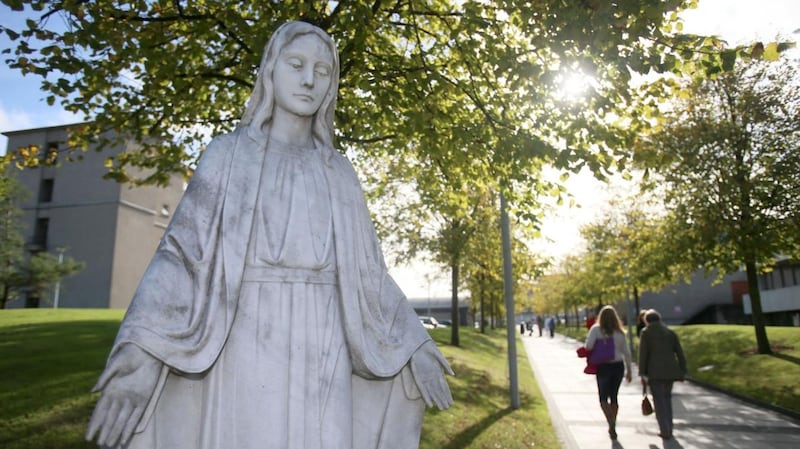In the recent debates about the new National Maternity Hospital (NMH) being run by a religious order, it became clear that Irish citizens have no idea how their public services are delivered. In Ireland we have a model called “welfare partnership” which means that the government funds the third sector (charities, foundations, social co-operatives, nonprofits, trusts, associations and other organisational forms) to deliver public services. It is a common model, also used in Germany, Belgium and elsewhere. The reason we have this model in Ireland, as others have already pointed out, is historical.
The protests against the new NMH being owned by St Vincent’s Holdings CLG, associated with a Catholic religious order, reflect the open wound that years of abuse have left. It is proof that we have not fully reckoned with the suffering and abuses of the past. It is important to separate the two issues – the role of religion in public services versus autonomous civil society governance.

Ireland has a large, active and vibrant third sector that delivers an impressive range of services. Benefacts is the publicly-available and searchable database that lists all civil society organisations in Ireland – all 34,331 of them. This is a relatively large number for our population, but many of these are very small, unincorporated associations with no staff.
A total of 10,225 organisations are incorporated as formal companies and thus governed by company law. Some 11,341 are registered charities (that includes both incorporated companies and informal associations) and are also governed according to charity law. There are 1,130 nonprofits delivering health services in Ireland, and 636 of those are registered charities. Some 3,965 nonprofits are schools. As you can see, this is how we deliver public services, including health and education.
It is understandable that the Irish public does not realise that its public services are delivered via charities. If you search hospitals in Ireland on the Health Service Executive website, independent nonprofits, such as the Coombe and NMH on Holles street, are listed as public hospitals. They are designated as ‘public’, meaning they are available without charge, as opposed to private services, which require a fee. However, they are not publicly owned, but private entities: nonprofits with charitable status.
Choice
The advantages of the welfare partnership model are that we have a diverse range and choice in our public services. You can choose among different primary schools, many different sports clubs, different types of hospitals. We have a lot of choice. The downside of that is that the standard of services can vary significantly across the country, and you may end up in a school or hospital governed by an ethos that conflicts with your own. Arguably, when it comes to public services, consistent, accessible high standard of care is more important than choice of ethos.
Another feature of welfare partnership is responsiveness to public needs. The public sector is generally good at delivering services that most people need, but often poor at delivering services that only a very small percentage of the population will ever need. For example, Debra Ireland was set up in 1988 by families affected by the genetic, painful skin condition epidermolysis bullosa (EB) who had no supports or public services available to them. Because they are governed by those affected by EB, Debra has provided much-needed services highly attuned to the families’ needs, in a way that the public sector could not. They are now funded by the HSE, but only providing less than 5 per cent of Debra’s 2020 income.

The disadvantage to leaving minority public services up to civil society to provide is that it takes the energy and resources of citizens who already pay their taxes and are facing a particular need to have to rally together to provide their own public services, often on a shoestring budget and usually at a time when they are already facing a health or other challenge. In a way, this is an approach to public services that originates out of neglect.
A big disadvantage of the welfare partnership model is that the nonprofits delivering the public services may be shaped by ideologies that are not in line with public civic values. While Catholic-ethos schools and hospitals have provided excellent and comprehensive services over the years, they have also been responsible for human rights violations and abuses that have not been fully acknowledged or accounted for.
Referendum
It is now the case that the ideology of the church no longer aligns with that of the public, as shown by the referendums on marriage equality and repealing the Eighth Amendment. It would make a lot of sense to hold a referendum to finally decide whether religious organisations should deliver public services. It would be feasible to reconstitute those nonprofits as civic entities, not religious ones.
It would be a massive reorganisation of Irish society, however, for the public sector to take over governance of all public services delivered by civil-society organisations. And likely to end in disaster.
A final important point about welfare partnership models is that they are unrelated to the amount of public spending. Research that compares third sectors in different countries shows that the extent to which public services are delivered by the third sector does not correlate with the size of the welfare state. In other words, you can have expansive public services delivered directly by the state, or via the third sector; and, equally, you can find examples of minimal public spending on social welfare that is delivered either directly or through nonprofits.









